Underway on the Delta
Costa FLW Series Western Division event begins on the California Delta
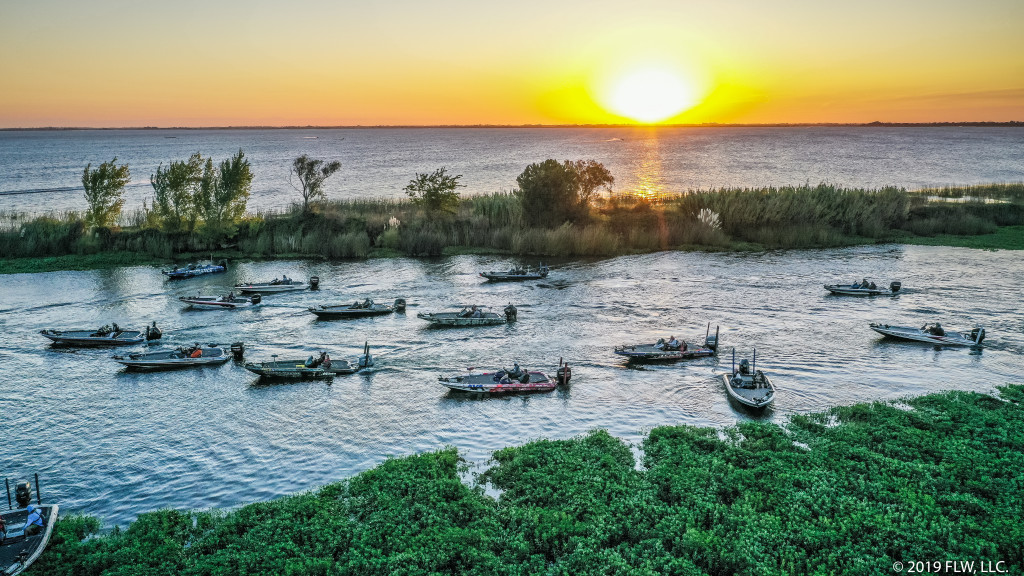
No matter the weather, no matter the environmental concerns, no matter the fishing pressure, the California Delta remains one of the nation’s most diverse and fertile freshwater fisheries — a truth that should play out in dramatic form during the Costa FLW Series Western Division event. The tournament, which is presented by Power-Pole, is the final Western Division event of the season and there’s a lot on the line in the tournament itself and the season-long points battle for Angler of the Year and Costa FLW Series Championship qualification.
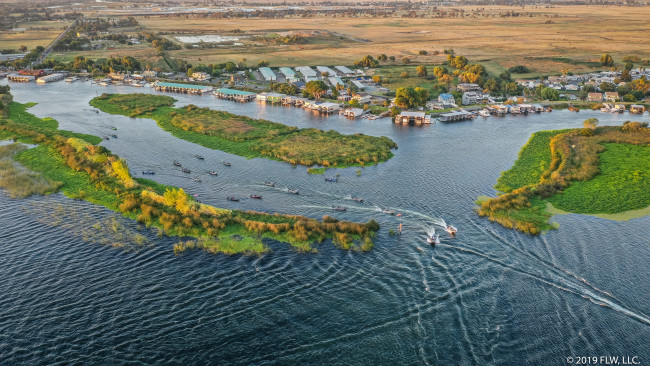
About the fishery
Covering approximately 1,100 square miles, the Delta drains California’s Central Valley with a massive network of sloughs and canals feeding into the confluence of the Sacramento and San Joaquin rivers.
Key habitat features include submerged aquatic grasses, hyacinth mats, pennywort, tules, riprap levies, scattered docks and crumbled piers. Given its connection to a major coastal bay, the Delta’s purely freshwater system feels strong tidal fluctuations, which throw an extra variable into daily patterns.
Kyle Grover, the pro from Rancho Santa Margarita, Calif., who won the Western Division’s second event at Clear Lake in May, has seen just about every acre of the Delta. He says time management is one of the key elements of successful tournament fishing. Big fish could, potentially be found most anywhere, but burning a tank of gas brings no guaranteed glory.
“You can make a long run and catch them good; I made a long run last year and caught them pretty good,” Grover says. “But I don’t think you can make a long run and win. I think you have to fish kind of the main Delta, within 10-15 miles of the takeoff at Russo’s Marina. That’s because year-round there are more big ones in that general vicinity.”
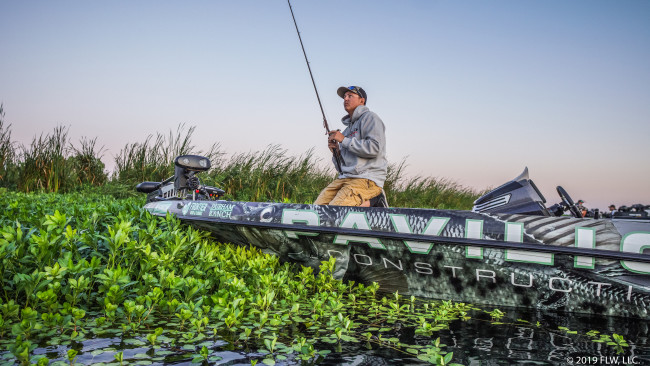
Current Conditions
Delta stick Ken Mah says he’s looking forward to the cooler weather on tap for the weekend. After reaching the high 90’s during practice, the daytime highs will remain balmy for day one, but forecasts indicate a cold front arriving by Friday and sending overnight lows into the 50’s and holding daytime temperatures to about 80 degrees or less.
Water quality tends to vary on the California Delta, as the conditions in the main rivers, broad wind-blown flats and shallow sloughs differ a lot. Natural forces aside, the state’s efforts to control aquatic vegetation have left a significant impact.
“It’s really clear in some places and other spots don’t have as much water clarity,” Grover says. “The state has been spraying (herbicides) a lot and some of the areas we usually like to fish are completely nuked — the hyacinth is dead and the tules are dead. An entire slough will be dead.”
On the upside, Mah points out that areas untouched by herbicides abound with healthy vegetation. These lush expanses, he says, have an unmistakable impact on the area’s overall health.
“In my estimation, the areas where there is grass are at least 30 percent healthier than last year,” Mah says. “The hydrilla, elodea and coontail is in really good shape and the circle of life is all there on the Delta. There are minnows, bluegill and shad throughout the entire system.”
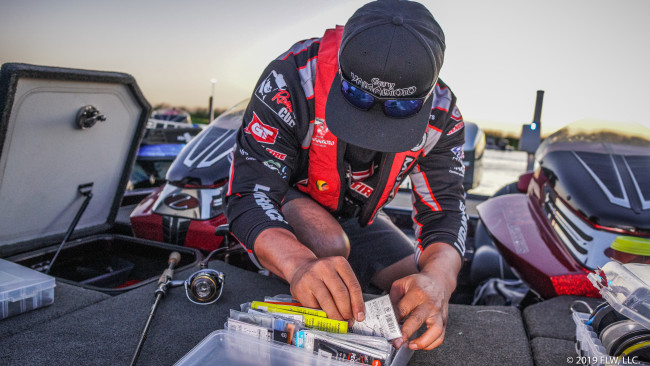
Tactics in Play
Grover says summertime on the Delta means frogging and punching. Both should play prominent roles this week, but the latter is likely to handle most of the heavy lifting due to the week’s tide schedule.
With tournament day bringing mostly outgoing to low water, bass will position perfectly for punchers. While high water allows fish to push deeper into the cover, falling water pulls them to the outer fringes where they’re more easily reached and captured. Moreover, falling tides pull forage out of flooded backwaters, so bass on the edges are typically eager to eat.
“As long as the wind doesn’t blow too hard, I think some type of topwater bait will factor into the results of this event,” Mah says. “Whether it’s a walking bait or a buzzbait or something smaller like a Pop-R, the people that do well will end up catching a couple of key fish on some type of topwater.
“Also, because some of the grass is in such good shape, I think you could see vibrating jig and a squarebill crankbait play a little more this year.”
While the California Delta’s typically known for the big-and-bold, you can bet that drop-shots — often baited with the classic margarita mutilator colored finesse worm — will play a prominent role for some. Although this iconic finesse rig rarely offers a winning pattern, it’ll often fill a limit or offer a sustainable option during tough conditions.
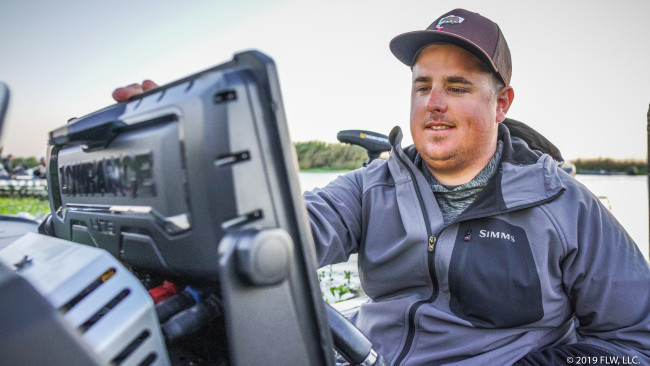
Critical Factors
- Weather – The weekend cool-down won’t be enough to shock the fish into any drastic behavior; still, the Delta’s stocked with Florida strain largemouths and these fish carry the DNA of one fickle creature. We’re not expecting lockjaw, but Mah said those who consistently produce will likely have some element of adjustment in their game plans.
- Clarity – This one mostly concerns the presence or absence of water-filtering grass, but if the front brings big winds, as fall fronts often do, turbidity could blow out previously productive areas. Fortunately, the Delta offers plenty of leeward areas where anglers can hide from a big wind. Of course, whenever you take large sections of a fishery out of the picture, the propensity for crowding increases.
- Tides – Experienced Delta anglers know how to fish every stage of the tide, but with competition hours seeing mostly low water, access to extremely shallow areas, such as backwater sloughs or those sneaky little hidden ponds within the tules, become harder to reach. Also, fish that folks found on higher tides in practice will not necessarily be in the same place on a low tide.
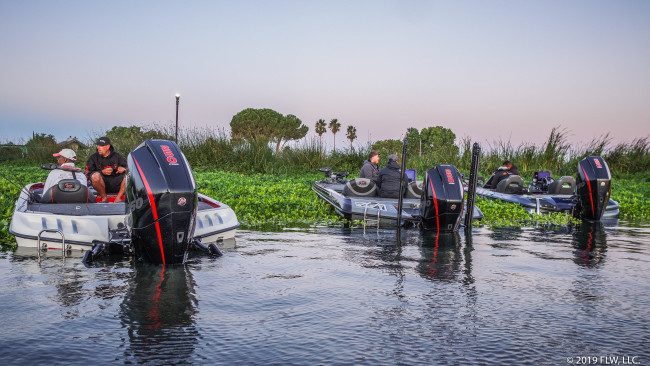
Dock Talk
Last year’s event saw Gregory Troughton win with a 3-day total of 60 pounds, 2 ounces. It took 39-15 to make the top 10 and Grover expects this year’s field to produce similar, if not better numbers.
“I think 16 1/2-17 pounds a day will make the cut and somebody that averages 19 or 20 pounds a day will win,” he says. “Somebody will have a big bag one day and then follow it up with a bag in the high teens.
“I think you’ll see a mid-20s bag, for sure,” adds Grover. “I think a 30-pound bag will be pretty tough, but would it surprise me? No.”
Mah agrees and thinks the fishing will be quite good overall.
“I would say that there will be more big fish brought to the scales this year. I don’t know that there will be a huge spike (over last year) in the weight predictions, but I think there will be more big fish caught, just because I think there are more big ones biting.”
Tournament details
Dates: Sept. 26-28, 2019
Format: All boaters and co-anglers will compete for two days. The top 10 boaters and co-anglers based on cumulative weight after two days of competition will advance to the third and final round, with the winner in each category determined by the heaviest cumulative three-day weight.
Takeoff Time: 7:00 a.m. PT
Takeoff Location: Russo’s Marina, 3995 Willow Road, Bethel Island, Calif.
Weigh-In Time: 3:00 p.m. PT
Weigh-In Location: Russo’s Marina